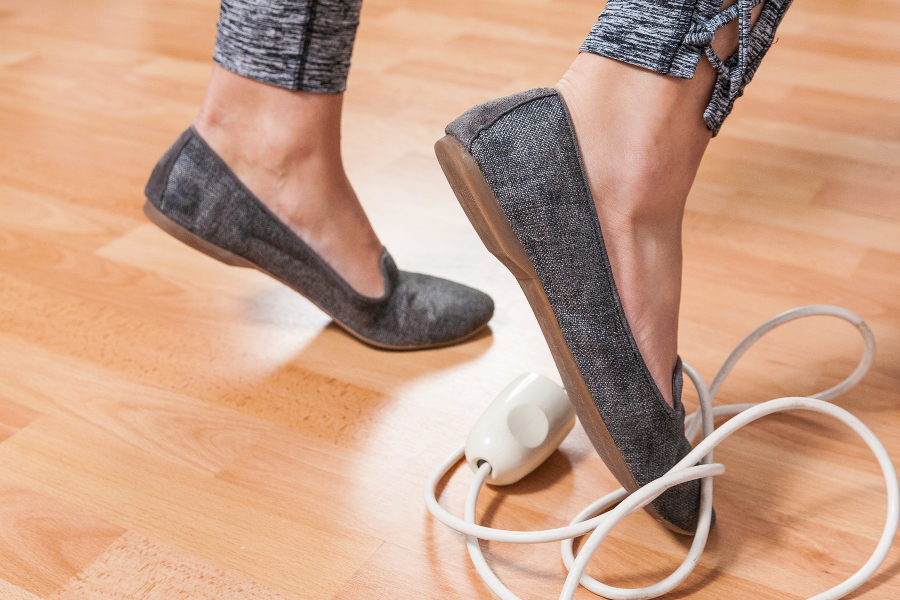With advances in healthcare, improved living standards and a general trend towards eating better and exercising more, many of the population are now enjoying a much longer and healthier life. Evidence of this is seen with many people now living into their 80s and 90s.
However, this longer life isn’t without risk, as increased frailty and a decline in health can impact on individual’s ability to identify and avoid dangers around the home. One of these biggest injury risks for the over 65’s is a fall. Figures from 2009 show that in England and Wales, 7,475 of the over 65 age group died from an accident in the home and 49% of these deaths were due to a fall. In 2002 over 65’s made up 19% of all visitors to the UK’s A&E Departments due to an accident in the home.
For those who survive a fall, they often spend months with impaired mobility and health, such as broken hips or bones. Recovery can be long and difficult, especially where health ailments were present before an injury.
Common factors that place a person at heightened risk are individual specific, such as problems with balance, failing eyesight, reduced mobility, medication, acute and chronic illnesses as well as hazards in the home. If you think you or a loved one may be at risk, there are a number of positive steps you can take to reduce the possibility of having a nasty fall in the home.
How to prevent falls in the home
Take a good hard critical look at the home from a health and safety perspective.
a) Secure or remove loose carpets, rugs and mats
Loose carpet, rugs or mats are an obvious hazard and should be repaired, removed or replaced swiftly. Removing all rugs is a good idea as they are loose and can get tangled up if people drag their feet or take small steps.
b) Keep high traffic areas and stairs free from clutter
Ensure traffic areas and the stairs are free from potential hazards by removing any ornaments or unnecessary furniture in these areas. Tuck away electricity cables for lights, heaters, kettles, radios and TVs so they don’t act as tripping hazards. Ensure the stair banister is secure and consider installing a second banister on the other side of the staircase if one is not already present.
c) Ensure light levels are good particularly at night
Falls at night are particularly common so lighting should be good and bright. Ensure bed side lights are within easy reach and consider additional illumination, such as low level motion sensor night lights to help with movement around the home. Take a look at this inexpensive option on Amazon. Make sure light bulbs are changed safely and regularly and have a supply of spares handy for when they do blow.
d) Consider an NHS home hazard assessment
If you identify anything else in your home survey, take action as soon as you can. If you’d like extra help with this, the NHS offers a home hazard assessment for people at risk of having a fall – ask your GP about this.
e) Reduce falls in the bathroom
Of course, the area we at Absolute Mobility specialise in is adapting the bathroom for people with reduced mobility. The bathroom is particularly hazardous for people at risk of a fall and spilt soapy water does not help. Should a slip occur things such as bath tubs, basins and taps are hard objects to fall upon, which can cause serious injury.
Aside from mopping up spills quickly and installing non-slip mats, to further prevent falls in the bathroom, we can install walk-in baths, easy access showers and wet rooms with anti-slip properties, low step thresholds, grab rails, shower chairs and half height carer screens as they are required.
If you’d like to have a quote for a walk-in bath, easy access shower or wet room designed to reduce the risk of falls, please feel free get in touch on 01491 411 041 or take a look through our product range.
How to help the individual
a) Wear a hip protector
One thing that has caught our eye is a hip protector. These are undergarments with a pocket over the hip area into which a padded hip protector is placed, providing an impact cushion in the event of a fall. Again take a look on Amazon.
b) Get regular eye tests
If a person’s eyesight is failing, ensure they have an up to date eyesight test, which may identify underlying eye health problems such as cataracts or glaucoma, which can impair eyesight.
c) Do regular exercise
Exercise programmes can improve strength and balance and reduce a person’s risk of having a fall. Talk to your GP about training programmes in your local area.
d) Review your medication
If medication is causing dizziness speak to your GP or pharmacist, who’ll be able to review your current prescription.
What to do in the case of a fall
If you’ve already had a fall, visit your GP to discuss it. They do take falls in older people seriously as they are well aware the age group is most at risk. They are keen to reduce any potential serious injuries from occurring by giving you advice specific to your individual needs and concerns.
ROSPA (The Royal Society For The Prevention Of Accidents) has also produced a couple of helpful videos.
How to get up from a fall, providing guidance on how to get up safely from a fall.
Facing up to Falls,which gives practical steps on avoiding falls by highlighting key issues that lead to a tumble.
12 April,2018







